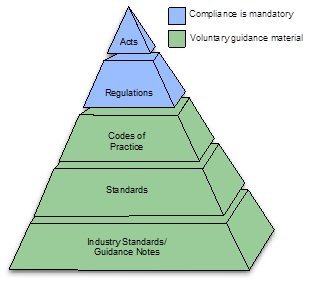Engineers Australia Safety Case Guidelines Due to Be Released
The Engineers Australia Safety Case Guideline (3rd Edition) is presently being reviewed by Engineers Australia legal counsel.
It is expected to be released by the Risk Engineering Society through Engineers Australia Media in early 2014.
This third edition of the Safety Case Guideline considers how a safety case argument can be used as a tool to positively demonstrate safety due diligence consistent with the model Work Health and Safety (WHS) legislation (Work Safe Australia 2011) and the Rail Safety National law amongst others, and to provide general information concerning the concepts and applications of risk theory to safety case arguments.
The Guideline adopts a precautionary approach to demonstrating safety due diligence, meaning that safety risk should be eliminated or reduced so far as is reasonably practicable (SFAIRP) rather than reducing risk to as low as is reasonably practicable (ALARP) as encouraged by numerous Australian and international standards and regularly used by many Australian engineers. The Guideline emphasises that attempting to equate SFAIRP and ALARP is naively courageous and will not survive post-event judicial scrutiny.
The expected adoption of the Guideline represents the intellectual tipping point in the technical management of safety risk, at least in Australia, since a guideline or code of practice published by practitioners in their area of competence takes legal precedence over an industry-based standard unless that standard is called-up by statute or regulation. The call-up of a standard in legislation is frowned upon by parliamentary counsel since it derogates the power of parliament to unelected standards committees rather defeating the purpose of a parliamentary democracy. Advice is that under the new safety legislation the hierarchy is now:

In a discussion of the legal status of standards, Minter Ellison partner Paul Wentworth concluded that "Engineers should remember that in the eyes of the courts, in the absence of any legislative or contractual requirement, an Australian Standard amounts only to an expert opinion about usual or recommended practice. Also, that in the performance of any design, reliance on an Australian Standard does not relieve an engineer from the duty to exercise his or her own skill and expertise."
Previously, due diligence meant compliance with the laws of man. The Guideline emphasises that to be safe in reality (meaning an absence of harm), one must first manage the laws of nature rather than the laws of man. Safety due diligence therefore requires a positive demonstration of the alignment of the laws of nature with the laws of man, in that order.
This is quite different to demonstrating due diligence in the finance world. Money isn’t real. That is, it does not exist in a state of nature, for example, it does not grow on trees and therefore the laws of nature don’t directly apply to it. This means that in the financial world, due diligence will probably continue to be considered the same as compliance. Equating due diligence with compliance is an approach many audit committees pursue with regard to safety risk but which is now effectively prohibited by statute law in most Australian jurisdictions.
This article first appeared on Sourceable (no longer available).
